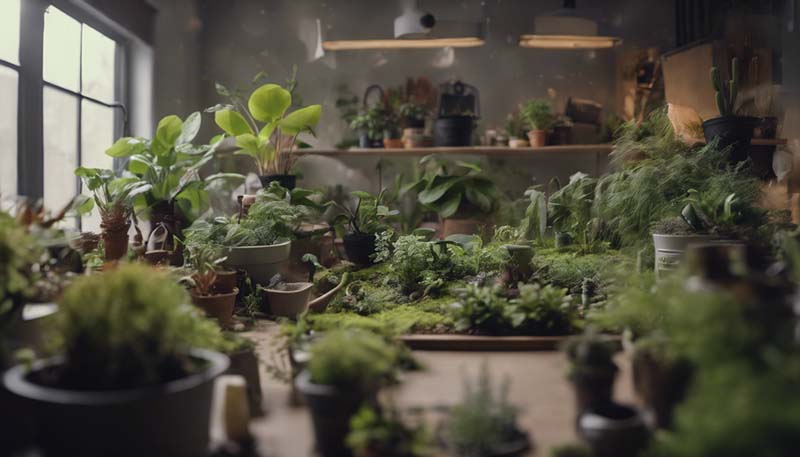How to Create an Indoor Garden Ecosystem
Welcome to your journey of creating a thriving indoor garden ecosystem. In this guide, we will explore the essential elements of an indoor garden, the benefits of such a setup, and step-by-step instructions to help you get started.
The Importance of an Indoor Garden Ecosystem
An indoor garden ecosystem is a self-sustaining environment that mimics nature's balance. It offers numerous benefits, including:
- Improved air quality by producing oxygen and filtering pollutants.
- Stress reduction through the calming effect of nature.
- A source of fresh herbs, vegetables, and fruits.
- Educational opportunities for children and adults alike.
- Aesthetic appeal and a sense of accomplishment.
Essential Elements of an Indoor Garden Ecosystem
To create a successful indoor garden ecosystem, you'll need to consider the following elements:
Advertisement
- Plants: A variety of plants that can thrive indoors, including air-purifying species.
- Lighting: Adequate natural or artificial light to support photosynthesis.
- Water: A water source and a system for watering that conserves and recycles water.
- Soil: Nutrient-rich soil or an alternative growing medium.
- Composting: A way to recycle organic waste into nutrient-rich compost.
- Insect Control: Beneficial insects or other methods to control pests naturally.
- Temperature and Humidity: Control over these factors to suit your plants' needs.
Step-by-Step Guide to Creating Your Indoor Garden Ecosystem
Follow these steps to create your very own indoor garden ecosystem:
Assess Your Space
Determine the size and location of your indoor garden. Consider factors like available light, temperature, and space for plant growth.
Choose Your Plants
Select a mix of plants that can grow well together and are suitable for indoor conditions. Include plants that attract beneficial insects and those that repel pests.
Set Up Your Growing Medium
Prepare your soil or alternative medium, ensuring it is well-draining and nutrient-rich. Consider raised beds, pots, or vertical gardens depending on your space.
Establish a Light Source
If natural light is insufficient, invest in grow lights that mimic the sun's spectrum to support plant growth.
Create a Watering System
Set up a drip irrigation system or self-watering pots to ensure your plants receive consistent moisture. Consider using rainwater or collected water to reduce waste.
Start Composting
Incorporate a small compost bin or worm farm to recycle kitchen scraps and garden waste into nutrient-rich compost for your plants.

Introduce Beneficial Insects
Introduce ladybugs, lacewings, and other beneficial insects to help control pests naturally. Avoid using chemical pesticides that can harm these beneficial inhabitants.
Monitor and Maintain
Regularly check your indoor garden for signs of pests or disease. Prune plants as needed to maintain their health and shape. Adjust your watering and lighting as seasons change.
Harvest and Enjoy
Once your plants mature, harvest your herbs, vegetables, or fruits. Enjoy the fresh produce and the satisfaction of maintaining a sustainable indoor garden ecosystem.
Tips for a Successful Indoor Garden Ecosystem
Tip 1: Patience is Key
Growing an indoor garden ecosystem takes time. Be patient and allow your plants to grow at their own pace.
- Research each plant's growth timeline and care requirements.
- Monitor progress and adjust care as needed.
Tip 2: Learn from Mistakes
Gardening is a learning process. Don't be discouraged by setbacks; instead, learn from them and improve your approach.
- Keep a garden journal to track your observations and changes.
- Join online gardening forums for advice and support.
Tip 3: Embrace the Cycle
Understand the natural cycle of growth, decay, and renewal. This will help you maintain a balanced ecosystem.
- Composting is a crucial part of this cycle.
- Rotate your crops to prevent soil depletion and pest buildup.
Conclusion
Creating an indoor garden ecosystem is a rewarding endeavor that can enhance your living space while promoting a sustainable lifestyle. By following the steps and tips provided, you'll be well on your way to enjoying the benefits of your very own indoor garden.
Comment